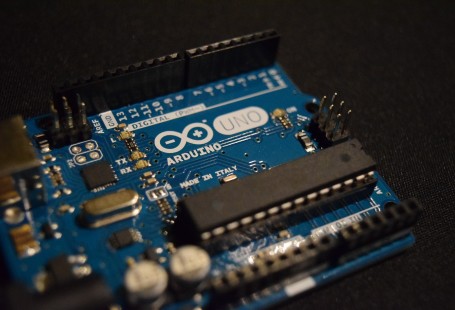We have heard it so much, we probably tune it out. Yet, it’s true. The connected future, birthed in a blossom of the Internet of Things (IoT) will bring about major changes in the ways humans interact with computers and the impact of computing on our daily lives. For now, the fullness of the possibilities of IoT, is yet a promise to be considered, nurtured, and shaped.
The smartphone brought us the reality of everywhere computing- emails, calls, SMS, notepads, web browsing, digital payments etc. in our pockets. In parallel, advances in micro-machinery and easy-to-use microcontroller platforms, led to development of sophisticated sensors that can detect the various elements of an environment such as chemical and biological components. Those new sensor capabilities along with the more traditional sensor capabilities of temperature and pressure made computers ‘aware’.
Before long, innovators began to explore how else we might leverage those computing advances to further augment our experiences with computers. Could sensors detect the chemical or biological components of the soil in a farm and dispense fertilizer? Could cities sense pollution and warn residents or trigger preventive measures? Could computers sense the temperature in a room and adjust accordingly? The Internet of Things was born.
The brilliant article, Eight Ways the Internet of things Will Change How We Live and Work, gives great examples of current experiments and successes of major IoT deployments in 8 sectors.
Seven highlights from Eight Ways the Internet of things Will Change How We Live and Work
Home and Office: The breakout success is the Nest Learning thermostat. Nest boasts that its device—which “learns” your schedule, programs itself and can be controlled from your phone—could save users 20% on energy.
Cities: In Philadelphia, they’ve invested in $4,000-apiece solar-powered garbage cans (called Big Bellies) that crush waste and send a missive to a dispatcher requesting pickup when they’re full. Philly has been able to reduce the number of weekly garbage-collecting shifts from 17 to just three, and realize $1 million a year in savings on fuel, maintenance and labour costs.
Manufacturing: In Germany, Siemens’s plant in Amberg churns out close to 12 million programmable logic controls a year. (A PLC is a switchboard that can control systems as diverse as cruise ships, ski lifts and, yes, assembly lines.) Microsensors embedded throughout the manufacturing and assembly process have helped the company virtually eliminate defects: It claims its PLCs are perfect 99.99885% of the time.
Vehicles: The research firm Gartner has estimated that, by 2020, there will be 250 million connected cars on the world’s roads, with many of them capable of driving themselves. There are eight million traffic accidents each year and 1.3 million crash-related deaths; Cisco’s Smart, Connected Vehicles division has posited that autonomous cars could eliminate as many as 85% of head-on collisions.
Healthcare: Philips—best known for light bulbs and electric toothbrushes—has created a pillbox that pops open when it’s time to take your meds, and sends a message to, say, a family member or nurse confirming that you’ve taken them. They have also developed sensors that use high-definition cameras to monitor skin colour, breathing and temperature, and alert nurses of any changes.
Energy: The basic theory behind the so-called Smart Power Grid is simple: Power is priced on the basis of demand, and this information is transmitted immediately to smart meters, thermostats and appliances so that they can draw the power they need at off-peak times, when it’s cheapest.
Agriculture: Farmers have always been early adopters of technology. New machines from John Deere can not only plow, sow and reap, they can also collect a Farmer’s Almanac worth of data, including air and soil temperatures, moisture, wind speed, humidity, solar radiation and rainfall. Smart watering systems sprinkle just enough H2O on the fields, in just the right places, and can detect leaks in water pipes—vital in dry and drought-affected regions like California.
I hope those highlights, and better still, the full article, ignite or perhaps further ignite your imagination concerning what’s possible with IoT and how you might plug in.
Subscribe
If you enjoyed this article, you can subscribe to receive our weekly newsletter via email.





2 comments On Igniting Imagination About The Future Of The Internet of Things
Pingback: On writing… Designing Secure IoT Systems | Edge of Us ()
Pingback: IoT Security: Old Problems + New Places = New Problems | Edge of Us ()